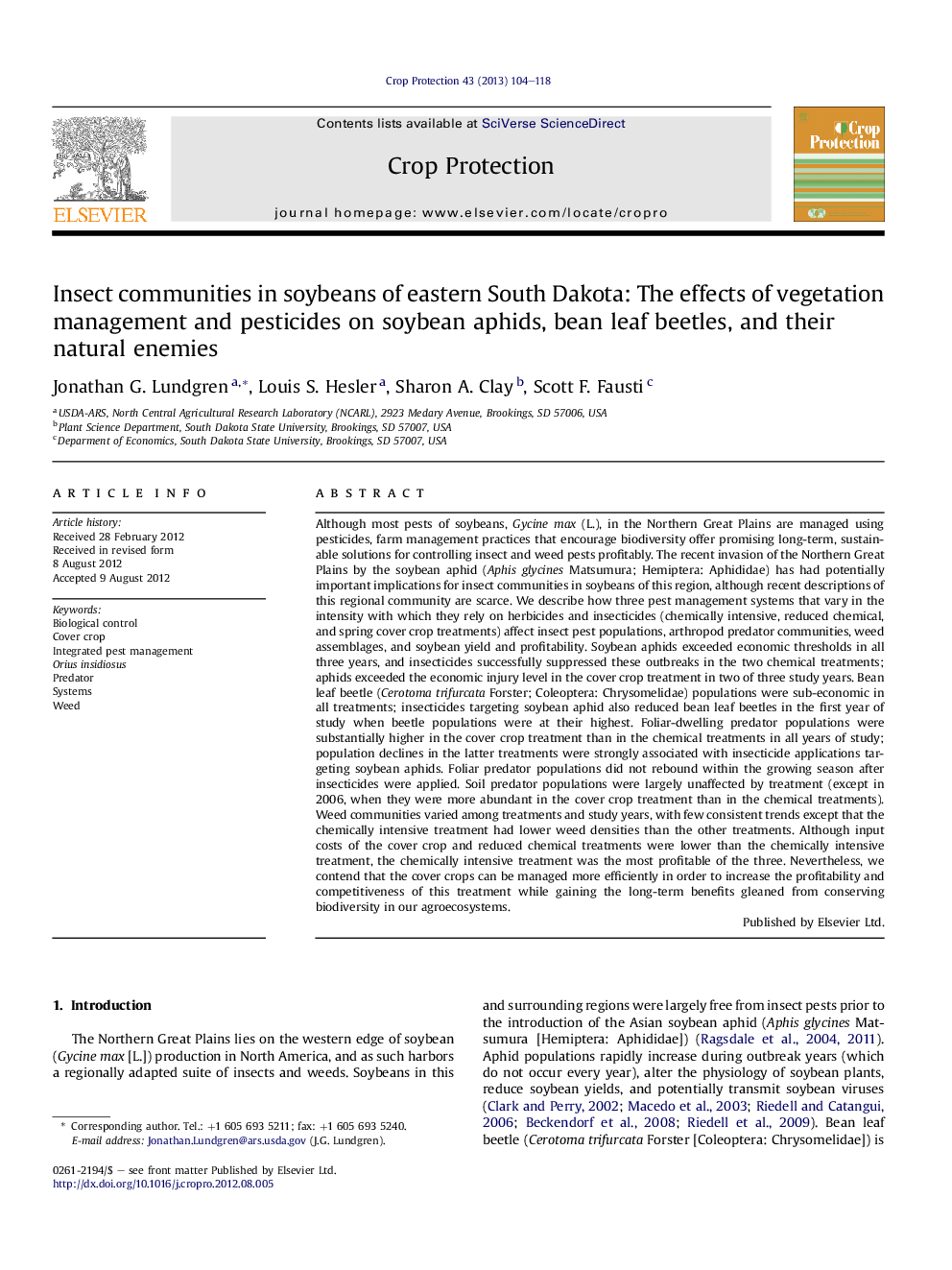| کد مقاله | کد نشریه | سال انتشار | مقاله انگلیسی | نسخه تمام متن |
|---|---|---|---|---|
| 4506108 | 1624344 | 2013 | 15 صفحه PDF | دانلود رایگان |

Although most pests of soybeans, Gycine max (L.), in the Northern Great Plains are managed using pesticides, farm management practices that encourage biodiversity offer promising long-term, sustainable solutions for controlling insect and weed pests profitably. The recent invasion of the Northern Great Plains by the soybean aphid (Aphis glycines Matsumura; Hemiptera: Aphididae) has had potentially important implications for insect communities in soybeans of this region, although recent descriptions of this regional community are scarce. We describe how three pest management systems that vary in the intensity with which they rely on herbicides and insecticides (chemically intensive, reduced chemical, and spring cover crop treatments) affect insect pest populations, arthropod predator communities, weed assemblages, and soybean yield and profitability. Soybean aphids exceeded economic thresholds in all three years, and insecticides successfully suppressed these outbreaks in the two chemical treatments; aphids exceeded the economic injury level in the cover crop treatment in two of three study years. Bean leaf beetle (Cerotoma trifurcata Forster; Coleoptera: Chrysomelidae) populations were sub-economic in all treatments; insecticides targeting soybean aphid also reduced bean leaf beetles in the first year of study when beetle populations were at their highest. Foliar-dwelling predator populations were substantially higher in the cover crop treatment than in the chemical treatments in all years of study; population declines in the latter treatments were strongly associated with insecticide applications targeting soybean aphids. Foliar predator populations did not rebound within the growing season after insecticides were applied. Soil predator populations were largely unaffected by treatment (except in 2006, when they were more abundant in the cover crop treatment than in the chemical treatments). Weed communities varied among treatments and study years, with few consistent trends except that the chemically intensive treatment had lower weed densities than the other treatments. Although input costs of the cover crop and reduced chemical treatments were lower than the chemically intensive treatment, the chemically intensive treatment was the most profitable of the three. Nevertheless, we contend that the cover crops can be managed more efficiently in order to increase the profitability and competitiveness of this treatment while gaining the long-term benefits gleaned from conserving biodiversity in our agroecosystems.
► Insecticides reduce soybean aphid pressure, but also remove natural enemies from soybeans.
► Cover cropping conserves natural enemies, and research will help make this competitive with conventional production.
► Weed control affects insect populations, and reducing herbicide use can be competitive with herbicide-intensive production.
Journal: Crop Protection - Volume 43, January 2013, Pages 104–118